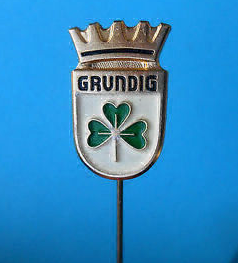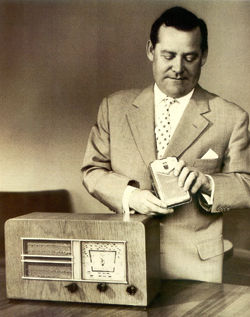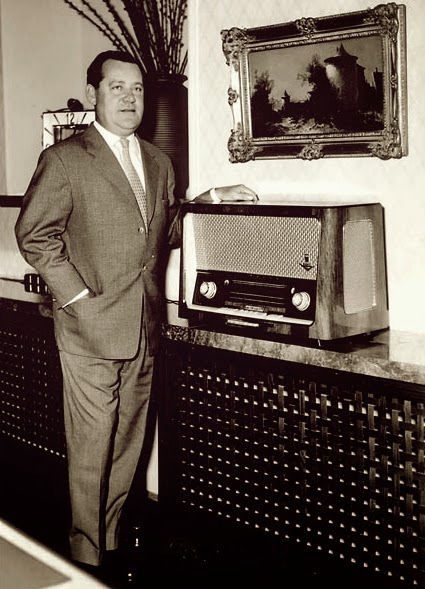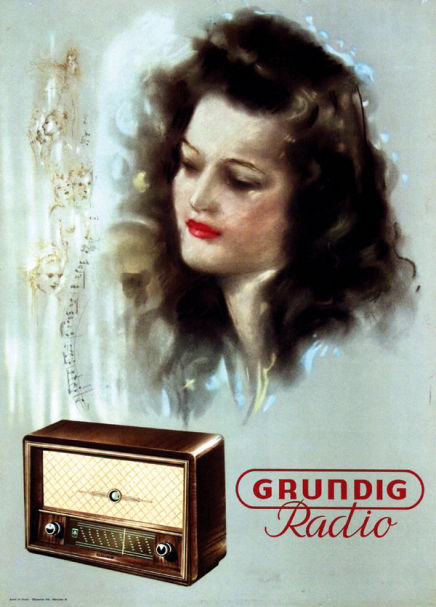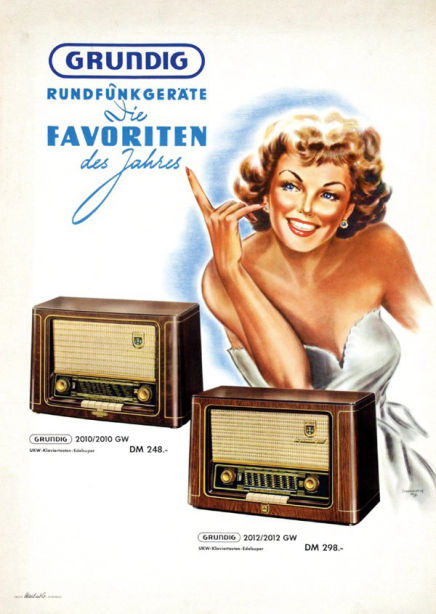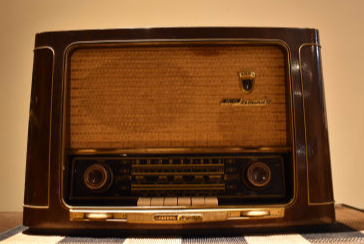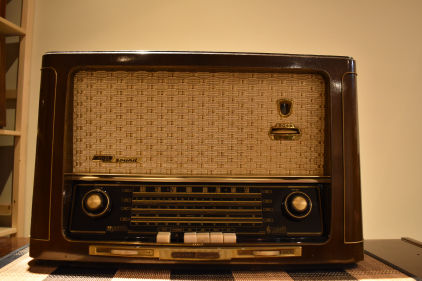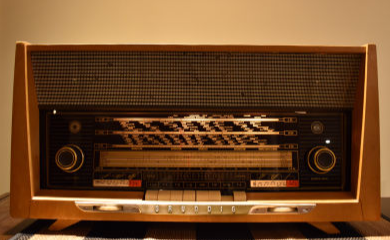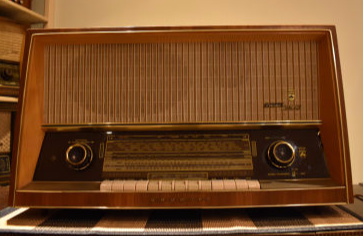1954
The implementation of very short frequency (VHF) radio opens the field for new sound quality and dynamic side speakers create a 3-D sound. The top appliance from this time is the 5050W/3 D with five speakers, eleven AM and FM circuits, which can receive VHF as well as short, medium and long wave.
1955
During the next decade the portable transistor Grundig radio, portable tape recorders, dictation machines and music players with stereo sound were all exciting new Grundig products at the cutting edge of consumer electronics.
1957
Grundig acquired a majority shareholding in the typewriter manufacturers Triumph and Adler. This led to the creation of the largest tape recorder factory in the world in Bayreuth.
1960
In 1960 Grundig expanded beyond Germany for the first time, establishing a tape recorder factory in Belfast, Northern Ireland.
1960 also saw the launch of new TV channels and, in response, Grundig TVs were upgraded to receive VHF, as well as the first wireless ultrasound remote control.
In the Audio sector Grundig introduced a modular system with separate components (radio, stereo amplifiers, record player, tape recorder, separate speaker units and even a 3-D sound device). Customers could build their own hi-fi system and incorporate it into their living room design.
